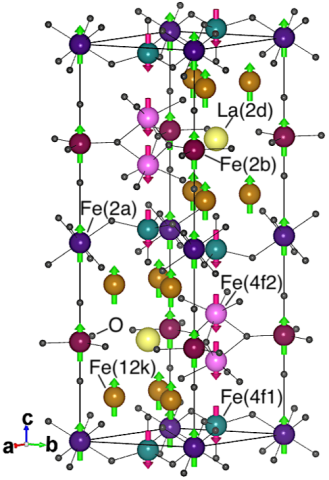
CMI researchers at Ames Laboratory conducted the research for this highlight
Innovation
Application of an ab-initio modeling to double the magnetocrystalline anisotropy of M-type strontium hexaferrite (SrM) via non-critical element, La, substitution.
Achievement
Developed a localized electronic structure mechanism and predicted both the insulating behavior and the origin of the very large magnetocrystalline anisotropy (double than that of SrM) in lanthanum M-type hexaferrite (LaM).
Significance and Impact
- Localized electronic structure mechanism correctly predicts magnetocrystalline anisotropy of insulating permanent magnet oxides.
- Identified site substituted LaM formulation uplifts permanent magnet performance.
- Potential improvement of magnetization via small substitution of Co in LaM.
Hub Target Addressed
Win industry adoption of three technologies related to materials substitution for rare earth magnet materials.
